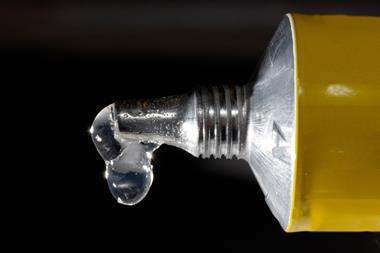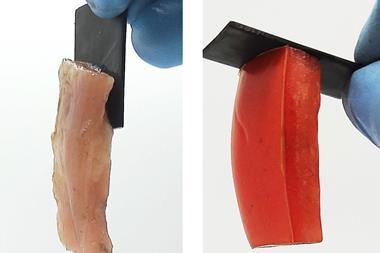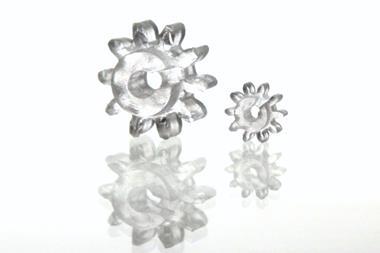Metallic glass can be used as a glue to bind various materials together, new research shows. The work could be developed into a strategy for making and tailoring the properties of composite materials.
A long-standing goal for materials scientists is preparing materials with particular properties. Forming composites by combining two or more materials has emerged as a way to achieve this. To date, thermoplastic polymers are the most common binders, or glues, used to prepare composite materials due to their thermoplasticity. Crystalline metallic materials display excellent mechanical properties, making them desirable components of composite materials, however their lack of thermoplasticity has so far prevented their application as binders.
While investigating the thermoplastic properties of metallic glasses, Jiang Ma and his group at Shenzhen University in China noticed that they behaved in a similar manner to polymers. ‘Consequently, the idea of bonding materials together with metallic glasses came up,’ says Ma.

Now Ma’s team has developed a lanthanum-based metallic glass that also contains aluminium, nickel, copper and cobalt. It is a solid-state metallic material at room temperate and becomes viscous on heating. To use the material as a glue, the researchers mixed small particles of the metallic glass with particles of a composite’s constituent materials, then applied heat and pressure. They tuned the mechanical, magnetic and electrical properties of the resulting composite by altering the relative amount of metallic glass in the composite. ‘The fabrication process is very simple, relatively low temperature and stress are required,’ explains Ma. ‘No extra additives are needed; therefore, the composition of the composites can be precisely controlled. As a result, the performance can be precisely regulated.’
The researchers used the metallic glass to bind a range of materials, including high entropy alloys, ceramic insulators and iron-based metallic glasses. However, Ma says it is not limited to these. ‘Almost any kind of solid-state materials can be stuck together by the metallic glass glue, that is why this work is important.’
The work shows ‘that a metallic glass in particulate form can be mixed with another phase and hot compacted to form composites. The choice of a lanthanum-based metallic glass with low glass-transition temperature facilitates the forming and binding,’ comments Lindsay Greer, a materials chemist at University of Cambridge, UK. But adds: ‘It remains to be seen whether other metallic glasses could be used, and whether the resulting composites can outperform their conventional counterparts.’
References
J Fu et al, Mater. Horiz., 2021, DOI: 10.1039/d1mh00521a












No comments yet